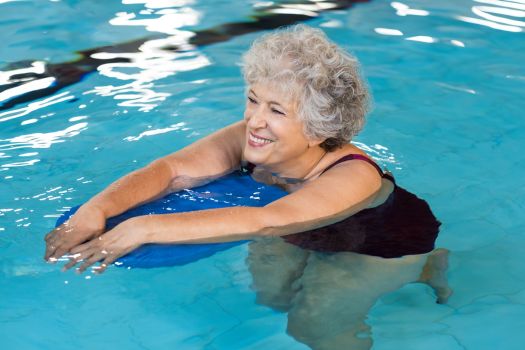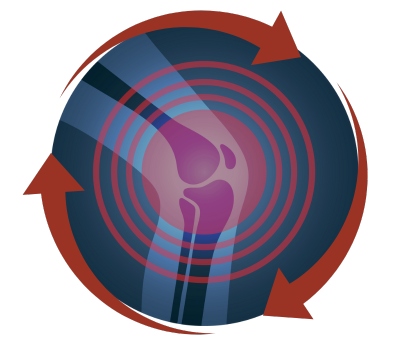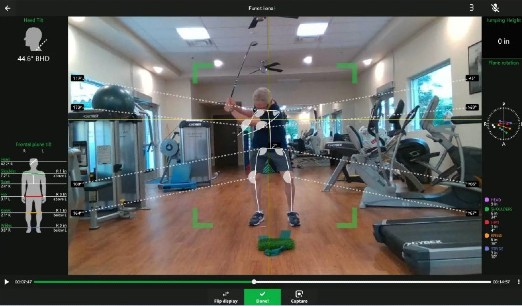How to Manage Arthritis Pain: The Power of Staying Active
Arthritis is a chronic condition that affects an estimated 58.5 million adults in the US. It causes joint inflammation, stiffness, and pain, making everyday tasks challenging and painful. And while there is no cure for arthritis, it can be treated and managed to help reduce pain and improve overall quality of life. Arthritis pain can vary from mild discomfort to severe agony, depending on the individual and the specific type of arthritis they have. Understanding the nature of arthritis pain is crucial in finding effective ways to manage it.
Physical activity is crucial in helping manage arthritis pain, joint function, and improving quality of life. When we don't move our joints regularly, they become stiff and painful. To paraphrase Sir Isaac Newton’s first law of motion, “A body in motion stays in motion.”
The Importance of Staying Active with Arthritis
Many seniors with arthritis fear that physical activity will worsen their pain or cause further damage to their joints. However, the opposite is true. Staying active is essential for managing arthritis pain and maintaining joint health. Regular exercise helps to improve joint flexibility, reduce inflammation, strengthen muscles around the joints, and increase overall endurance.
Engaging in physical activity also helps manage weight, which is crucial for people with arthritis. Excess weight puts additional stress on the joints, worsening the pain and accelerating joint degeneration. By staying active, we can maintain a healthy weight and relieve some pressure on our joints, ultimately reducing arthritis pain.
How Staying Active Can Help Manage Arthritis Pain
Staying active with arthritis has numerous benefits when it comes to pain management. First, exercise helps increase blood circulation, delivering essential nutrients to the joints and reducing inflammation. It also stimulates the production of endorphins, natural painkillers that can alleviate arthritis pain and boost our mood.
Regular physical activity strengthens the muscles surrounding the joints, providing better support and reducing the strain on the joints. It also improves joint flexibility and range of motion, making daily tasks easier and less painful. (Joint flexibility and range of motion are also important for fall prevention!) By staying active, we can break the cycle of arthritis pain, improve our joint function, and prolong our independence.
Types of Exercises That Are Beneficial for Arthritis Pain Management
When it comes to managing arthritis pain through physical activity, certain types of exercises are particularly beneficial. Low-impact exercises like walking, swimming, and cycling are gentle on the joints while providing an excellent cardiovascular workout. These exercises help to improve joint flexibility, strengthen muscles, and reduce arthritis pain.

Strength training exercises, using resistance bands or light weights, are also crucial for managing arthritis pain. Strengthening the muscles around the joints helps to provide better support and stability, reducing the strain on the joints themselves. It is important to start with light weights and gradually increase the intensity to avoid overexertion and injury.

Flexibility exercises, such as yoga and tai chi, focus on stretching and improving joint range of motion. These exercises can help to reduce stiffness, increase flexibility, and relieve arthritis pain. They also promote relaxation and stress reduction, which can positively impact overall pain management.
How Seniors Can Remain Active with Arthritis
Staying active with arthritis requires careful planning and consideration. Some physical activity is better than none, but listening to your body and doing what you can is most important. Here are some tips to help you stay active while managing arthritis pain:
Common Mistakes to Avoid When Managing Arthritis Pain Through Physical Activity
While staying active is crucial for managing arthritis pain, it is essential to avoid common mistakes that can worsen your condition. Here are some mistakes to steer clear of:
Additional Strategies for Seniors Managing Arthritis Pain
While staying active is crucial for managing arthritis pain, making a few extra changes to your lifestyle can add to your pain management efforts. Here are some additional strategies that can help:
![]() Maintain a healthy diet: A nutritious diet can support joint health and overall well-being. Focus on consuming a variety of fruits, vegetables, whole grains, lean proteins, and healthy fats. Avoid processed foods and foods high in sugar and saturated fats, as they can contribute to inflammation.
Maintain a healthy diet: A nutritious diet can support joint health and overall well-being. Focus on consuming a variety of fruits, vegetables, whole grains, lean proteins, and healthy fats. Avoid processed foods and foods high in sugar and saturated fats, as they can contribute to inflammation.

![]() Manage stress: Stress can exacerbate arthritis pain. Incorporate stress-management techniques such as deep breathing exercises, meditation, or engaging in activities you enjoy. Finding healthy ways to cope with stress can positively impact your pain levels.
Manage stress: Stress can exacerbate arthritis pain. Incorporate stress-management techniques such as deep breathing exercises, meditation, or engaging in activities you enjoy. Finding healthy ways to cope with stress can positively impact your pain levels.
![]() Get enough rest: Adequate sleep is essential for managing arthritis pain. Aim for 7-9 hours of quality sleep each night. If arthritis pain makes it difficult to get comfortable, consider using pillows or supports to help alleviate pressure on your joints.
Get enough rest: Adequate sleep is essential for managing arthritis pain. Aim for 7-9 hours of quality sleep each night. If arthritis pain makes it difficult to get comfortable, consider using pillows or supports to help alleviate pressure on your joints.
![]() Consider alternative therapies: Some people find relief from arthritis pain through alternative therapies such as acupuncture, massage, or hydrotherapy. Consult with your healthcare provider to determine if these treatments could benefit you.
Consider alternative therapies: Some people find relief from arthritis pain through alternative therapies such as acupuncture, massage, or hydrotherapy. Consult with your healthcare provider to determine if these treatments could benefit you.
Bonus Tip: Independent Living Community Resources for Seniors with Arthritis
If you are a senior living with arthritis, retirement communities like Fellowship Square Surprise offer numerous resources and support to help seniors prolong their independence and manage pain.
![]() Exercise programs specifically designed for seniors with arthritis: Fellowship Square Surprise offers exercise programs tailored to seniors with various conditions, including arthritis. These individualized programs include low-impact exercises, strength training, and flexibility exercises.
Exercise programs specifically designed for seniors with arthritis: Fellowship Square Surprise offers exercise programs tailored to seniors with various conditions, including arthritis. These individualized programs include low-impact exercises, strength training, and flexibility exercises.
![]() Physical therapy: Physical therapists specialize in helping individuals manage pain and improve mobility. They can create personalized therapy programs that address your specific needs and goals. Our therapy team will work with your healthcare provider to get a referral and develop a treatment plan for your needs.
Physical therapy: Physical therapists specialize in helping individuals manage pain and improve mobility. They can create personalized therapy programs that address your specific needs and goals. Our therapy team will work with your healthcare provider to get a referral and develop a treatment plan for your needs.
From the CDC: Strive for Five - Additional Strategies for Seniors Managing Arthritis
Don’t Wait to Enjoy Your Independence! Empowering Yourself to Manage Arthritis Pain Through Staying Active
Arthritis pain can be debilitating, but staying active is a powerful tool in managing this condition. Regular exercise helps to reduce inflammation, strengthen muscles, improve joint flexibility, and alleviate arthritis pain. By following the tips outlined in this post and making other lifestyle changes, such as maintaining a healthy diet and managing weight, you can empower yourself to take control of your arthritis pain and improve your quality of life.
Please remember to consult with your healthcare provider before starting any exercise program or making significant lifestyle changes. As mentioned earlier, this is one of the many areas where Fellowship Square Surprise's fitness trainers and physical therapy staff are invaluable. They can work with your physician to provide guidance and ensure that your chosen activities are safe and suitable for your specific condition. With the right approach and support, you can embrace the power of staying active, prolonging your independence, and managing your arthritis pain effectively.
If you or a loved one are struggling with arthritis, don't let it hold you back! Call or email us now to schedule a tour and discover the countless benefits of Enhanced Retirement Living at Fellowship Square Surprise.



